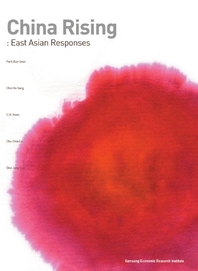

- ���� � ��
��� �� | Ŭ�����Ͽ콺


- ���� �������� ���� : 400�� ���� ������� ��� ...
��Ÿ�ڸ� ��þ� ��/������ �� | ������2


- ����縦 �ٲ� ȭ�� �̾߱� : ���� ź������ �������...
���̾� ���繫 ��/����ȯ �� | �������������
- Ȩ >
- ���ͳݺ���Ͻ�


East Asia��s economic development model is usually characterized by the "flying geese" paradigm, whereby industrialized countries steadily move up the export value chain through leveraging relationships with developing countries. This developmental model, however, is evolving with the rise of China and a rapidly changing global environment. Indeed, China is expanding its presence in the global market not only in traditional labor-intensive industries, but also in high-tech industries. In addition, China, as a developing country, is also a leading FDI destination from industrialized countries.
China��s economic rise presents complex decisions for regional players. Historically, growth in East Asia centered around one country that channeled increased trade and investment flows throughout the region. The ultimate effect of China��s economic rise on neighboring countries is still unclear. On the one hand, China directly competes with many countries in the region for inward bound FDI, particularly for labor-intensive manufacturing. On the other hand, Chinese imports from East Asian neighbors have dramatically increased in recent years with China becoming the most important export market for many countries in the region.
In order to promote sustainable growth, East Asia needs to establish a new growth model. The new model must leverage China��s dramatic growth and adequately manage the risks presented by the changing regional economic environment. For this to happen, East Asian countries must further diversify industries, expand trade flows, and seek greater cooperation in the area of human resources
The authors of this book set out to analyze future problems faced by East Asian countries and changes in the regional economic order due to China��s rise. They agree to one conclusion: China��s rise offers both opportunities and threats to East Asian countries and countries should cooperate with each other in order to capitalize on potential opportunities.
���� : Park Bun-Soon et al.
Park Bun-Soon (Research fellow, Samsung Economic Research Institute)
Choi Ho-Sang (Research fellow, Samsung Economic Research Institute)
C.H.Kwan (Senior fellow, Nomura Institute of Capital Markets Research)
Chu-Chia Lin (Professor, National Chengchi University)
Shin Jang-Sup (Associate Professor, National University of Singapore)
Chapter 1. Introduction: Purpose and Overview
1. Growth Patterns of East Asian Economies
2. Implications of China��s Rise for East Asia
3. Organization of the Book
Chapter 2. Korea��s Response to China Rising
1. Introduction
2. The Growth Potential of Korea��s Economy Being Undermined
3. Economic Cooperation with China and Its Impact
4. Policy Suggestions: Creating a Basis for an Economic Hub in Northeast Asia
Chapter 3. The Rise of China: Challenges and Opportunities for Japan
1. An Evaluation of the Chinese Economy
2. Complementary Relations between Japan and China
3. The Macroeconomic Impact on Japan of China��s Rise
4. Japan Coping with the Rise of China: A Microeconomic Perspective
5. In Search of a Win-Win Game
Chapter 4. Taiwan: Investment in China and Structural Change
1. Introduction
2. Bilateral Trade across the Taiwan Strait and Taiwan��s Investment in China
3. Economic Impact and Structural Change for Taiwan
4. Production Integration and International Competitiveness
5. Taiwan��s Economic Policy toward China��
6. Conclusion
Chapter 5. Responses to the Emerging China: Singapore and Hong Kong
1. Introduction
2. Singapore and Hong Kong: Different Paths of Economic Development
3. Embracing China��s Growing Economy
4. Responding to Competition from China
5. Conclusion
Chapter 6. The Rise of China and the Economic Integration of East Asia
1. Introduction
2. Japan and Economic Cooperation in East Asia
3. The Collapse of Existing Order
4. The ��Lily?Pad�� Model of Regional Development
5. Conclusion


































